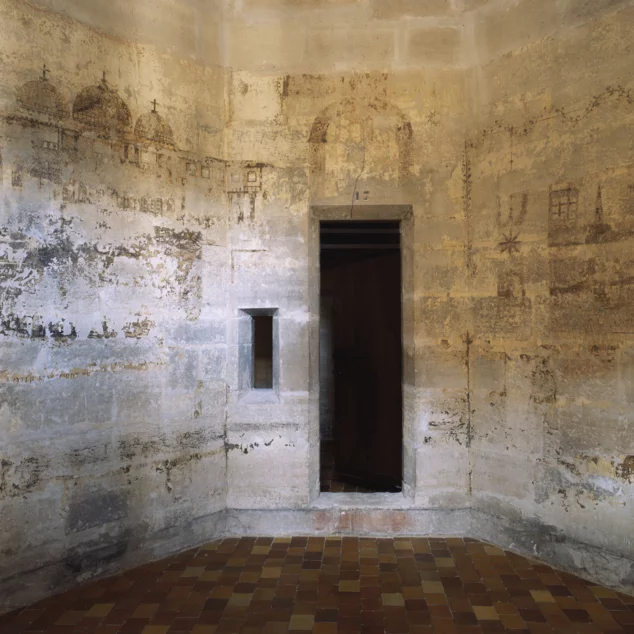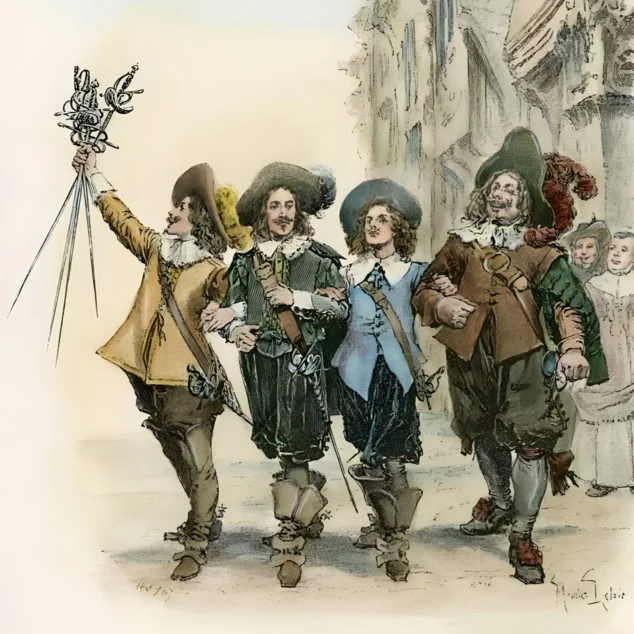History
article | Reading time8 min
History
article | Reading time8 min
Rich and prestigious, the history of the Château de Vincennes is intimately linked to that of the French royal power. Go through the eight centuries of existence of one of the greatest castles of France !
At the end of the XIIth century, Louis VII decides to make erect a new royal manor. The chosen location, east of Paris, proved to be highly strategic. In addition to being close to the capital, it is located near several communication routes, both land and river. An additional advantage is that it is bordered by a huge wood, ideal for hunting!
The different buildings were progressively built until the middle of the 14th century. In the end, they formed an irregular quadrilateral of about 60 meters on each side. None of them was fortified, because it was first a secondary residence. It was in the 13th century, with the reign of Louis IX, known as Saint Louis, that Vincennes became a place of royal power.
Indeed, he regularly went there with his wife, Marguerite de Provence, and their children. He also held his Council meetings there, managing administrative and legal affairs. The image of Saint Louis rendering justice under an oak tree in Vincennes has remained famous!
© RMN
In the 14th century, the Hundred Years War was raging and the French had already suffered several defeats. Between 1357 and 1358, John II the Good had to face a peasant revolt and an uprising of the Parisians. Thus, on February 22, 1358, Etienne Marcel, Provost of the merchants of Paris, led an attack against the Palais de la Cité, where the future Charles V resided. This riot had a profound effect on the latter and encouraged him to build a new fortress. With its prestigious past, Vincennes was the perfect location. In 1361, the construction of the main tower began, building on the foundations erected by Philip VI 25 years earlier.
In 1364, Charles V ascended the throne. He became the main builder of the Château de Vincennes and his influence was decisive. In addition to a defensive place, he chose to make it a royal residence and a place of safety. The ensemble had to show the extent of his power, not only to his people, but also to the neighboring sovereigns.
The building site was executed very quickly for the time. For example, the immense keep, 52 meters high, was built in only 10 years. The king moved into his apartments in 1367 or 1368, although the work was still in progress, thus abandoning the Palais de la Cité. Thereafter, a second enclosure, more vast, is born. It would house other elements, such as a large bailey and the Sainte-Chapelle .
Philippe Berthé / Centre des monuments nationaux
In the 17th century, the monarchs abandoned the high tower, preferring the comfort of a pavilion southwest of the enclosure. It was here that the sovereigns took refuge when circumstances dictated. After the assassination of Henri IV, in 1610, his son, the future Louis XIII, was sheltered here. In 1648, when the Fronde broke out, it was the turn of the young Louis XIV to settle there.
A few years later, the latter was looking for a new place of residence and his choice was Vincennes. He entrusted his architect, Louis Le Vau, with the task of drawing up plans for a new building. This was to be the King's pavilion, completed in 1658. This was followed by the Queen's pavilion and a garden with an orangery and kiosks.
With the advent of the Sun King, the Château de Vincennes entered a new era! However, Louis XIV wished to move further away from Paris, which had been hostile to him during the Fronde. He therefore built another castle in Versailles and left Vincennes with his Court in 1682.
When the Sun King died in 1715, the young Louis XV, aged 5, came to spend a few months there. But then, what to do with the castle of Vincennes? In 1740, the monarch authorized the installation of a porcelain factory, the forerunner of the Sèvres factory. He also created a military school there in 1751.
However, the royal authority is always present in Vincennes. Indeed, since the 15th century, the dungeon has housed a prison. Between the 16th and 18th centuries, famous captives followed one another there, such as the future Henri IV, Nicolas Fouquet, Diderot, or the Marquis de Sade! Many common law prisoners were also sent there by letters of seal from the King, symbols of absolutism. This was notably the case during the Affaire des Poisons, in 1679-1680, a series of scandals involving poisoning, which shook the Court of Louis XIV.
In 1784, King Louis XVI was forced to close it under pressure from the people, who saw it as a symbol of royal oppression. The buildings were then put up for sale; there was even talk of demolishing them.
Artist : Franz Adam Van Der Meulen Institution : Carnavalet Museum
The French Revolution and the Directory saved the walls of the castle. In 1796, the Arsenal of Paris was assigned to the castle and Vincennes became a military stronghold. Its activities will support the Napoleonic wars campaigns. This new role brought its share of transformations. Thus, the towers of the enclosure, in poor condition, were destroyed between 1805 and 1820.
During the same period, between 1808 and 1814, the keep became a place of confinement, particularly for political prisoners or prisoners of war. In March 1804, the ditches of the fort also witnessed the execution of the Duke of Enghien, whose remains rest in the holy chapel.
New conflict and new danger... The fortress of Vincennes played a key role in the battle of Paris in 1815. Indeed, the Austro-Russian-Prussian troops occupied the capital and tried to seize the arsenal. They met with the resistance of General Pierre Daumesnil and his men, who refused to surrender the place to them!
The end of the 19th century also marked the beginning of the recognition of the castle as a historical monument. The Sainte-Chapelle was the first element to be classified, in 1853, followed by the keep in 1913. In the 1920s, a vast restoration project was launched, interrupted by the Second World War. Vincennes became the headquarters of the French General Staff until 1940. Occupied by the Germans, the castle was liberated in August 1944, after being partially destroyed. Several dozen resistance fighters were shot between August 19 and 22. Four years later, the Historical Service of the Army moved in, followed by those of the Air Force and the Navy.
A central witness to the history of France, the Château de Vincennes is now open to visitors thanks to the Centre des monuments nationaux. From a medieval manor house, it has become a place of memory whose discovery is an unforgettable moment.
What if you went to explore it in your turn? Book your tickets online
© Patrick Müller / Centre des monuments nationaux
Free of right
Patrick Müller / Centre des monuments nationaux
© Patrick Cadet / Centre des monuments nationaux











